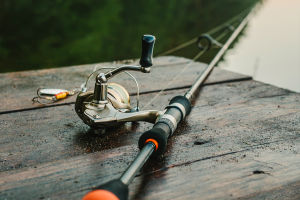Safety awareness is paramount in water sports.
Swimming rings and lifebuoys are fundamental water safety equipment, playing critical roles in rescuing drowning individuals and providing buoyancy.
However, despite their similar appearance, there are distinct differences in design, functionality, and usage scenarios between swimming rings and lifebuoys. This article aims to compare these two types of water safety equipment to provide a better understanding of their disparities.
Swim Rings
Swim rings are typically inflatable, ring-shaped, and crafted from rubber, plastic, or a rubber-plastic blend. They are commonly utilized to aid children in learning to swim or maintaining buoyancy in water.
Swim rings feature a relatively straightforward design, usually with a single-ring structure that can be easily slipped over the head and secured around the waist.
They offer a moderate buoyancy, allowing users to float and move through the water by kicking and paddling. Primarily used in swimming instruction or recreational activities, swim rings are effective learning aids for non-swimmers or beginners.
However, swim rings are not specifically engineered as life-saving devices. While they can provide some buoyancy, their design—encircling only the waist—makes them suboptimal for rescuing drowning individuals.
Additionally, the buoyancy provided by swim rings is limited and may not adequately support the weight of an adult or a person in distress.
Lifebuoys
In contrast, a lifebuoy is purpose-built for life-saving interventions. Typically round or oval in shape, lifebuoys are constructed from plastic, rubber, or foam and are often brightly colored to enhance visibility.
Equipped with a rope, they can be thrown to or grasped by a drowning individual. Designed with rescue operations in mind, lifebuoys offer greater buoyancy and stability, capable of supporting the weight of a drowning person while keeping their head above water.
Lifebuoys are indispensable in emergencies and readily deployable to assist drowning victims in obtaining timely rescue. Commonly found in swimming pools, beaches, docks, and other aquatic environments, lifebuoys serve as essential safety equipment in numerous public venues.
Their usage is straightforward—simply toss the lifebuoy to the individual in distress and utilize the attached rope to pull them to safety.
Summary of Differences
In summary, while both swim rings and lifebuoys are water safety equipment, they exhibit distinct differences in design, functionality, and usage scenarios.
Swim rings are suitable for swimming instruction and recreational activities, providing moderate buoyancy, but they are not intended for life-saving purposes.
Conversely, lifebuoys offer superior buoyancy and stability, specifically designed for rescue operations, making them the primary choice in emergencies.
Therefore, when selecting water safety equipment, it is essential to choose the appropriate gear based on specific circumstances and requirements to ensure safe and enjoyable aquatic activities.


